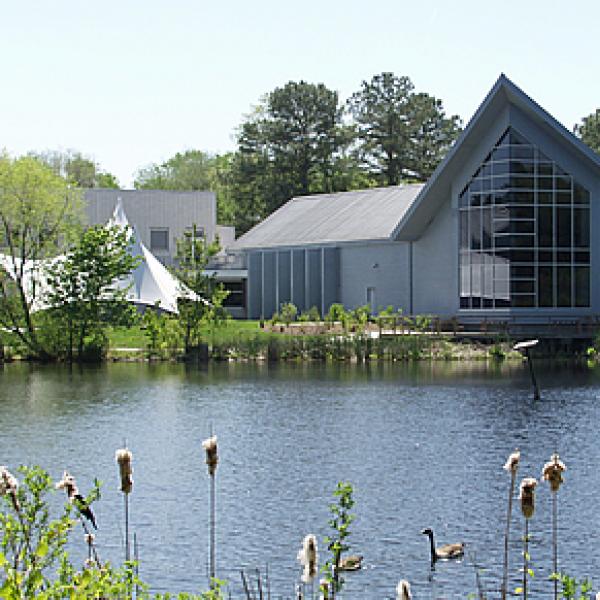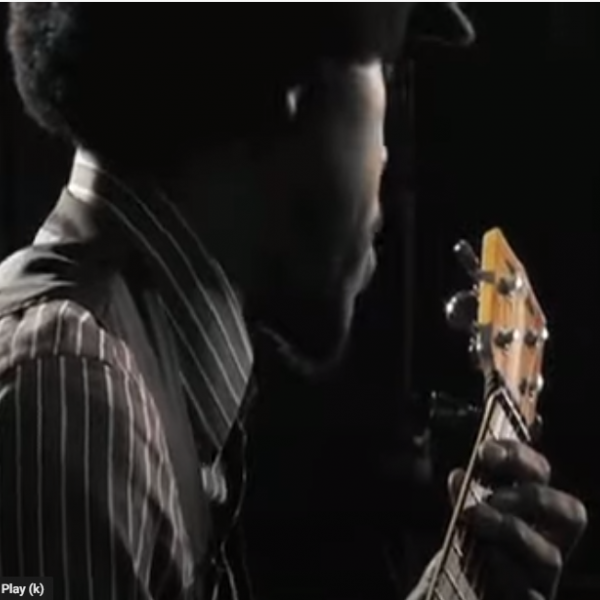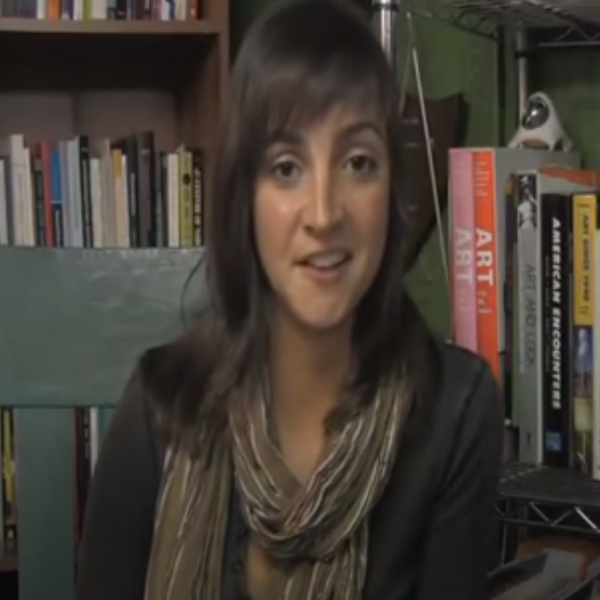Body of work

Aszure Barton & Artists performing Barton's Blue Soup. Photo by Don Lee, courtesy of the Banff Centre
Watching the choreography of Aszure Barton is like watching the physical unfurling of the human psyche. Under her direction, every muscle and nerve ending of the dancers seems emotionally charged, transformed from biological entities into agents of humor, torment, lust, and uncertainty. Equal parts explorations of movement and displays of theatricality, Barton's seductive work has earned her glowing accolades and prestigious commissions across the globe. Her own contemporary dance troupe, Aszure Barton & Artists, has solidified the 35-year-old's position as one of the discipline's most enterprising figures.
A native of Alberta, Canada, Barton began tap dancing at age three, launching an unusually active childhood filled with modern dance, ballet, musical theater, synchronized swimming, and competitive high jumping. With her friends, she would invent dance pieces, films, and skits, noting that she began choreographing her friends "when I was a teeny little person."
Although she nurtured dreams of becoming an orthodontist ("I was a fanatic about teeth and mouths," she said), it was the voice she found through choreography that proved irresistible. "I was quite shy," she said of her childhood. "When it comes to embracing a large group of people verbally, it's incredibly intimidating. With movement, expression [is] much more comfortable." She began studying at the National Ballet School in Toronto at age 14, and two years later initiated a choreography workshop with a friend that remains in place at the school. Barton eventually gravitated to modern dance for its "freedom of expression," though her varied background in dance is something she says cannot be erased from her bones or body.
After following her two older sisters to New York (both now dance with Aszure Barton & Artists), Barton fell into a familiar pattern for Big Apple newcomers, juggling dance with the financial necessity of babysitting and waitressing. Despite this somewhat uncertain footing, she founded Aszure Barton & Artists in 2002, for which she continues to serve as artistic director. "I just decided to do it one day," she recalled about her decision to start the group. "I had such a strong group of people and dancers that were excited about making something. You go, 'Okay, let's do this together. I'll lead it.' With so much momentum behind you, how can you not move forward?"
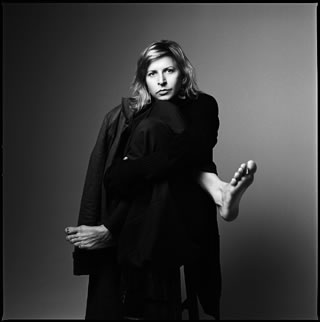
Aszure Barton. Photo by Graeme Mitchell |
This momentum was brought to the attention of former Mark Morris dancer Ruth Davidson Hahn, and Barton was invited to perform with Hahn's company in Nebraska in 2003. While at a reception there, she met dance legend Mikhail Baryshnikov, who was performing a piece Hahn had created for him the year prior. "He said, 'So,' very nonchalantly, 'I hear you're a choreographer. I'd like to see your work.' Yeah right!" she remembered, laughing at the memory. Dismissing the comment as idle party chitchat, she was surprised to find a message from him when she returned to New York. What followed was the type of mentorship that every artist dreams of but only a lucky handful manage to secure. Barton became the first resident artist of the Baryshnikov Arts Center (BAC) in 2005, and is one of only five to have choreographed original works for BAC.
She has gone on to choreograph for a lengthy list of iconic institutions, including the Martha Graham Dance Company, American Ballet Theatre, Les Ballets Jazz de Montréal, Nederlands Dans Theater, and the National Ballet of Canada. In 2006, Barton tackled the Great White Way when she choreographed the Broadway revival of The Threepenny Opera.
Although Barton said that developing trust with new dancers can be challenging, the unique dynamics of each group push Barton's work in new creative directions. She rarely arrives in the studio with a set plan, instead preferring to use the dancers' energy as a guide. "We pick up on wherever we are in that moment and build something out of nothing together," she said. "I don't have a formula, that's for sure. The people I work with are so incredibly intelligent and creative themselves that I'm really interested in the collaboration, and facilitating a space where they can bring themselves to the work."
Choreographing for other companies also influences Barton's work with her own New York-based company, which operates on a project basis rather than a full-time, daily schedule. "I've been very lucky to have the balance of my group and freelancing. We all get to venture out, collect experience, and come back. The moments [together] are really special." Barton describes her troupe as her "dream team," and the company has performed in far-flung international locales. This spring, the company will tour the U.S. and Russia, performing Barton's original productions of Busk and Blue Soup. Aszure Barton & Artists also offers residencies, master classes, and workshops, continuing the tradition of support that Barton inherited from Baryshnikov and others.
"Now that I'm in my 30s," she said, "it's really important for me to connect to younger dancers. I do not have all of the answers, but I certainly can teach something and facilitate a space that can support and teach what I know."
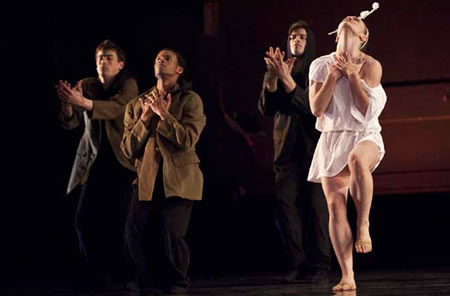
Aszure Barton & Artists performing Barton's Busk. Photo by Don Lee, courtesy of the Banff Centre |
Because her work is so collaborative, Barton resists categorizing her choreographic style, saying that "the only consistent thing in my work is change." While her stylistic approach may be constantly evolving, Barton's basic principles remain constant. She tries to honor the people that have trusted her as director, and does what she can to create an "open dialogue" with her dancers. As for her audience, she avoids the impossible task of trying to please everyone, and instead tries to remain "as honest and true to where I am or what I'm feeling intuitively and deeply." For Barton, communicating this emotional candor establishes an honest connection with spectators, allowing them to fully embrace the world she has created onstage. "I'm trying to return to that ecstasy of pure movement, or something that makes you feel completely moved," she said. "I want to be able to return to that deeprooted absolute joy."
This emphasis on reveling in the naked emotions of a moment informs every aspect of Barton's life. When asked what else she hopes to accomplish in her already illustrious career, she demurred. "I'm not so goal-oriented in terms of thinking, 'One day I would love to do this and that.' I always bring it back to the reality of the present moment. I try to just be where I am and honor where I am."
There is perhaps no need to target specific professional milestones; her trajectory all but ensures a parade of future achievements and successes. For now, her main focus is simply to stay grounded, and appreciate what she describes as a "truly awesome life."
"I hope I can continue to be aware and remain sensitive, and continue believing in the power of creativity," said Barton. "It's [about] not becoming motivated by ego or taking work that is just for the sake of the prestige. To stay connected to why I do what I do would make me very happy."






